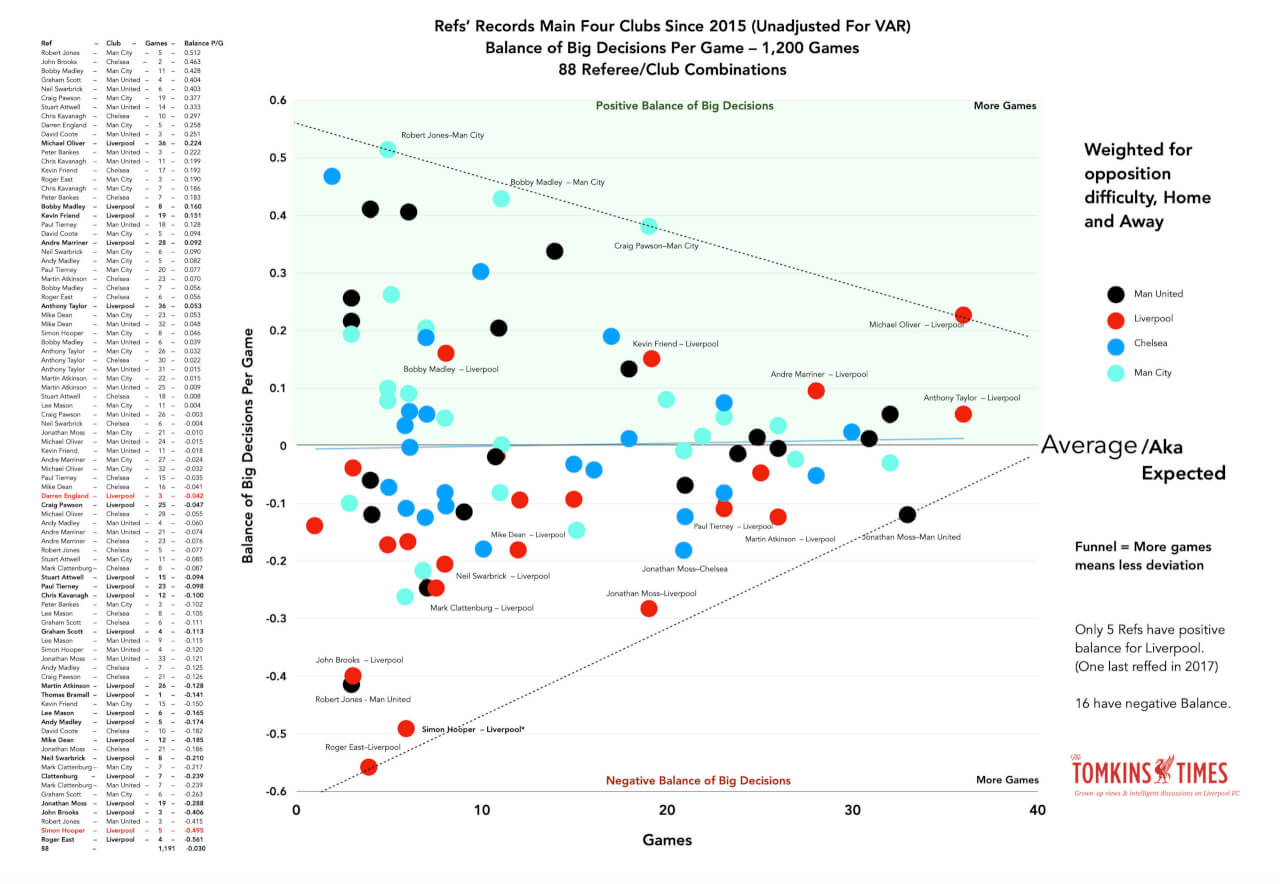Deep Dive into Premier League Officiating
In a world where football is evolving rapidly, the role of referees and VAR in shaping the outcomes of matches is becoming increasingly pivotal. A recent in-depth analysis by Paul Tomkins from The Tomkins Times has shed light on the officiating of the Premier League’s top four clubs: Liverpool, Manchester United, Manchester City, and Chelsea, from 2015 to September 2023. This article aims to provide a concise summary and reflection on Tomkins’ extensive study, focusing on the key findings and their implications.
The Human Element in Officiating
Tomkins’ study reveals that referees and VARs often make decisions based on pressure rather than the correct call. The term “sapiens” aptly describes this phenomenon, highlighting the unavoidable human error in decision-making. The study categorizes referees into Homers, anti-Homers, Avoidants, Crowd-Pleasers, and those with just plain weird decision-making patterns.
It’s a masterpiece / read it in full this morning and about to start a read over now 👇 https://t.co/msHxHvOxVo
— AnfieldIndex (@AnfieldIndex) October 2, 2023
The Objective Ref Rater Coefficient
Tomkins’ Objective Ref Rater coefficient identified Michael Oliver and Anthony Taylor as the best two referees, aligning with the general subjective opinion. This model aims to compare referees to the ‘norm’ and how far they stray from it in three separate metrics combined into one overall figure.
The Impact of VAR
The introduction of VAR has added another layer to the decision-making process. The study found that Liverpool receives the fewest subjective VAR Big Decisions among the Main Four, possibly to counter the misleading #LiVARpool narrative.
The analysis uncovers a fascinating pattern where referees from Liverpool or Merseyside are more likely to give a Big Decision to Mancunian clubs in Manchester but much less likely to favour Liverpool at Anfield. This pattern of “rival” refs being overly generous when at the home of the “enemy” is alarming and suggests an inability to referee “normally”.

The Anomaly of Liverpool’s Big Decisions
Liverpool, despite having the 2nd-best xG ‘GD’, receives the worst Balance of Big Decisions, roughly 14 fewer than expected. This anomaly is particularly stark when Liverpool is officiated by referees ranked lower in the Objective Ref Rater coefficient.
The study emphasizes the role of subjectivity in officiating, especially in VAR decisions. The data shows a disparity in the treatment of Chelsea and Liverpool compared to the Manchester clubs, raising questions about the consistency and fairness in officiating.
Reflections on Tomkins’ Findings
Tomkins’ meticulous analysis provides a comprehensive overview of the officiating landscape in the Premier League. The disparities in Big Decisions and the apparent geographic bias in refereeing are concerning revelations. The study does not insinuate corruption but highlights patterns that warrant attention and investigation. The human element in decision-making is inevitable, but the study underscores the need for transparency, consistency, and continual assessment and training for referees and VAR officials to uphold the integrity of the game.
Conclusion
Paul Tomkins’ extensive analysis of refereeing decisions offers a profound insight into the intricate dynamics of officiating in the Premier League. The anomalies and patterns unearthed in this study necessitate a closer look at the officiating mechanisms and the continual refinement of refereeing standards to ensure the equitable treatment of all clubs and the preservation of football’s essence.




